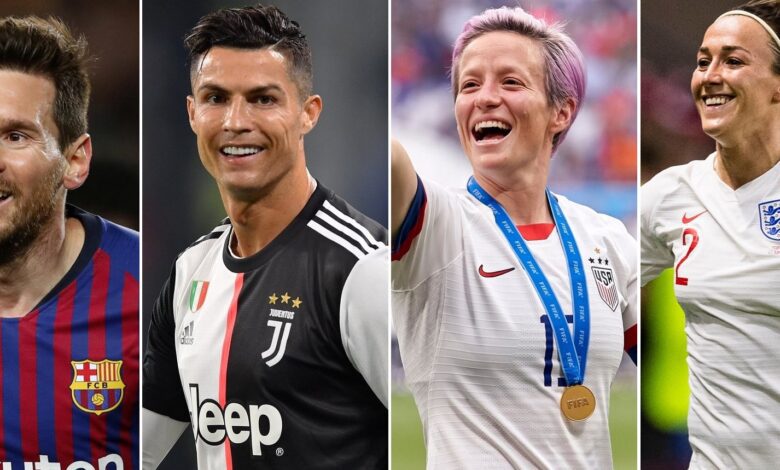Is the gender pay gap in football eternal? Or are we going to see a change soon?
The FIFA Women’s World Cup began on the 20th of July and will witness 32 teams fighting for the ultimate trophy

The issue of gender pay gap has been persistent for many decades which has oppressed women and has held them back as inferior to men who have always been in charge and earned more than women in every circumstance. This practice started out as a way to get women to work as cheap labour and has continued throughout history with some modifications. This in particular was a result of industrialisation which started to include women into the workforce. This practice also crept into the industry of sports as and when the formation of women’s sports began.
This brings us to the question as to why even in modern times, there is a massive pay gap between men’s sports and women’s sports, especially football. The FIFA Women’s World Cup began on the 20th of July and will witness 32 teams fighting for the ultimate trophy in the world of women’s football. However, the ultimate prize for the winning women’s team is not really that ultimate. With the 2019 FIFA Women’s WC winning team earning $4 million in comparison to the staggering $38 million earned by the 2018 FIFA Men’s WC winners.
The question that many of you might have is why is there such a huge difference between their earnings. For this, we will have to look into the factors determining the income. The first factor that we will look into is viewership. The viewership for the 2019 women’s world cup was recorded at around 700 million and is estimated to touch about a billion in the ongoing 2023 edition, compared to the 5 billion which was recorded in the 2022 world cup which is 5 times what the women’s world cup gets. This is primarily due to the reason that men’s football either international or club has more history than women’s football. As far as world cups are considered men’s world cup has been going on for decades whereas the women’s world cup was played for the first time almost 30 years ago in 1991. Since, the women’s sport does not have a long history, this is reflected in its viewership as not a lot of people are even aware if the women’s world cup is going on or not. This is contrary to the men’s world cup which is seen by billions on a global scale.
The second reason: sponsorship, is actually related to the viewership. Companies have a very simple logic of investing or sponsoring a team, i.e. increase in popularity of the brand and very good return on investment. Both of them which are not found as well in women’s football as in men’s. While the viewership in the world cup is still good considering the viewership of so many sports altogether, the problem persists as viewership of women’s club football remains to be low and since their viewership is so low, brands do not put in as much money as they would if it had been a men’s team.
The third reason is the match revenue earned by the competition. If we are to look at the revenue earned by clubs or national teams, the revenue earned by the club in men’s games or tournaments is so huge that women’s football clubs cannot even come near it. The revenue can include everything from ticket sales to sale of merchandise to even the share received by the organisers for the sale of food items inside the stadium. When it comes to world cups, the revenue earned in the 2019 Women’s world cup is $131 million against the $6 billion earned in the men’s world cup. This statistic alone shows why men are paid so much better than women.
However, FIFA has in June, taken the step to pay all the players of the women’s world cup individually from a total pot of $49 million out of the world cup prize money which is around $110 million. This means that a player would receive almost $30,000 for participating and $270,000 to the players of the winning team individually. The rest of the pot is going to be split between participating federations who will decide what share of this money to allocate to teams and players if any at all. In addition to prize money, FIFA committed to paying $42 million to the federations and players’ clubs for Women’s World Cup preparations.
All is not bad though, as plenty of female players spoke about what they believe is injustice against them and if we look at the popularity of women’s football throughout history, it can be very easily said that its popularity is at its peak with its all-time high viewership and the will of nations to invest millions into the women’s sport.
While many organisations have been moving towards equal pay, New Zealand Cricket Board became the first cricket board to announce equal pay to all its male and female players in 2022. Indian cricket board BCCI followed suit and announced that the women cricketers will be paid the same match fee as their male counterparts. They will now earn Rs 15 lakhs for a test, Rs 6 lakhs for an ODI and Rs 3 lakhs for a T20 game.
Another sport that has seen equal pay for women is Tennis, where for the past few years men and women tennis players who play in Grand Slams have earned the same amount of money depending on where they finish.
On to the ultimate question of whether the pay gap between men’s and women’s football or sport, in general, will end anytime soon. The answer to this is not that simple. While women’s sports currently do have momentum and the debate about equal pay is raging but it would be highly impractical to think that the equal pay issue would settle down any time soon as the economics of it does not make sense. By giving equal pay even though the revenue is way less, the sports bodies or organisations will only be using the profit from the men’s games which would usually be used for the development of their game and invested in the infrastructure for better future results. This would make the possibility of equal pay a very distant reality.



